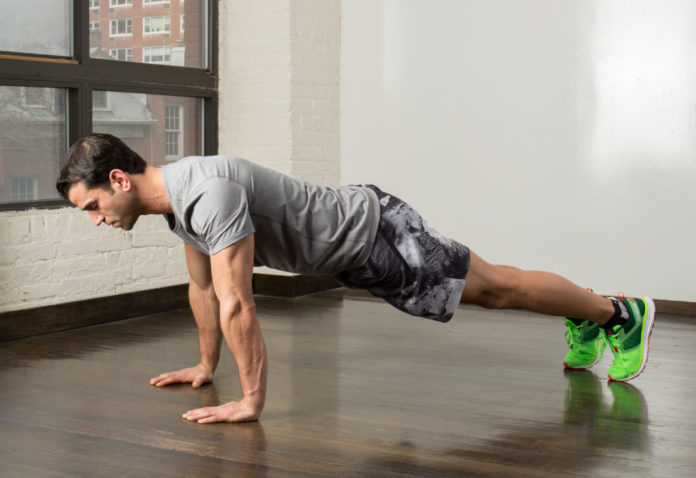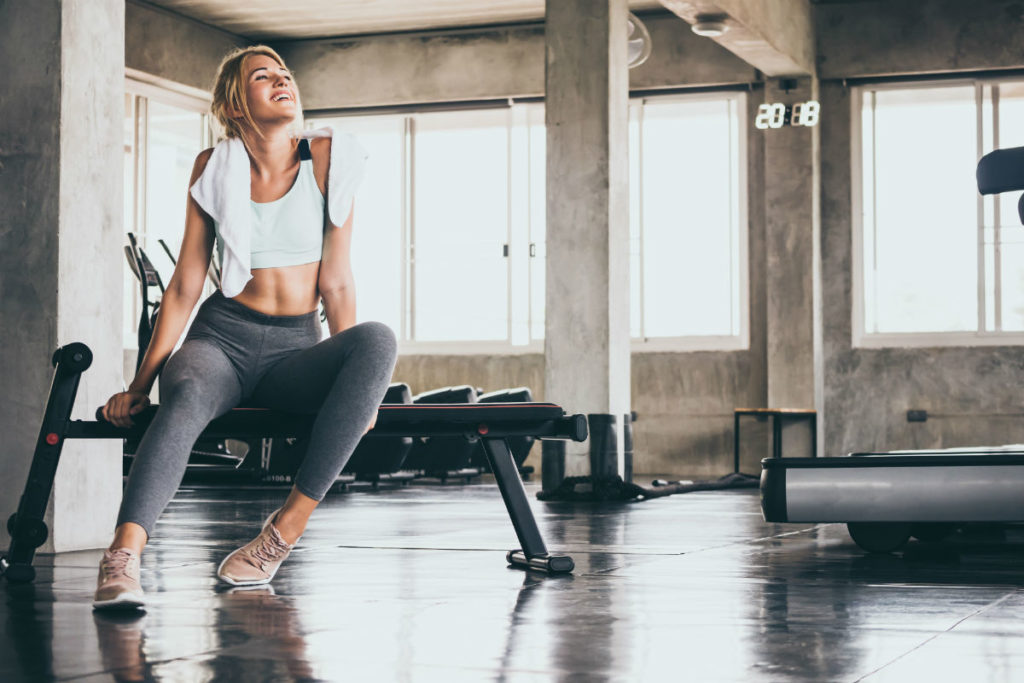
Endorphins are not everything when boosting your mood by exercising. Although exercising has been linked to nearly everything in life, like depression, memory loss, Alzheimer’s, Parkinson’s diseases, very little scientific knowledge exists to support it. So how does all of this actually work? What is the connection between our feeling of happiness and regular exercise?
What triggers the happiness in our brains when exercising?
Most people are not aware of what happens in our bodies while we exercise. We build muscle and stamina, as daily activities like climbing the stairs become easier. When our brain and mood are in question, things are less clear. People throw around expressions like “endorphins are released” without truly knowing what it means.
When you start exercising, your brain recognizes it as a moment of stress. While your heart pressure raises, the brain thinks you are fighting an enemy or fleeing from them. In order to protect your body and your brain from stress, a protein called BDNF (Brain-Derived Neurotrophic Factor) is released. It has a protective and reparative element to your memory neurons, acting like a reset switch. That is why we tend to feel at ease after exercising, as well as happy.
During this time, endorphins are also released in the brain, another chemical to fight stress. Their main purpose is to minimize discomfort of exercise, block the feeling of pain and provide a feeling of euphoria, according to a researcher, McGovern.
Therefore, BDNF and endorphins are the two reasons why exercising makes us feel so good and happy. An interesting as well as scary detail is that they have a similar addictive behavior like morphine, heroine or nicotine.

The key to maximum happiness during exercising is to focus on when, instead on more
This is where things get interesting. The question is how we can make these chemicals last longer? One recent study from the Penn State University found that “Those who had exercised during the preceding month but not on the day of testing generally did better on the memory test than those who had been sedentary, but did not perform nearly as well as those who had worked out that morning.”
Gretchen Reynolds, New York Times best selling author, wrote a book about this called “The first 20 minutes”. The key in getting the highest levels of happiness and benefits key is not to become a professional athlete. In reality, exercising in much smaller amounts is necessary to reach levels where everyday happiness and productivity peak.
“The first 20 minutes of moving around, if someone has been really sedentary, provide most of the health benefits. You get prolonged life, reduced disease risk — all of those things come in in the first 20 minutes of being active.”
“On exercise days, people’s mood significantly improved after exercising. Mood stayed about the same on days they didn’t, with the exception of people’s sense of calm which deteriorated.” ( from the University of Bristol)

How to develop a consistent habit of exercising
All of this is still much easier said than done. Much focus is necessary to get the habit of exercising every day. Exercise is a “keystone” habit, says Charles Duhigg, a New York Times bestselling author of The Power of Habit: Why We Do What We Do in Life and Business. Regular exercise can help you in other areas of life.
Joel wrote in one post about the power of daily exercise on everyday life. “By 9:30am, I’ve done an hour of coding on the most important task I have right now on Buffer, I’ve been to the gym and had a great session, and I’ve done 30 minutes of emails. It’s only 9:30am and I’ve already succeeded, and I feel fantastic.”
These are his most important habits when it comes to consistent workouts:
1. Put your gym clothes over your alarm clock when you go to bed
This is a powerful technique. It is easier to convince yourself in the morning to put your gym clothes on and work out.
2. Track your exercises and log them after every exercise
By hand or through an app on your phone, keep track of your progress. It is another habit in close connection with the actual exercising. It is also rewarding, as you will clearly see how much you have grown. Keep it organized and clean.
3. Starting small
For example, you can go with five minutes per day, three times a week. Five minutes of timed exercise, three times a week is nothing, you might be thinking. Because it is easy, you will move to longer times quicker, and gradually get stronger and more durable.

Conclusion: Greatest happiness levels come when you first start exercising
The Increase of BDNF proteins acts as a mood enhancer, similar to dr*g addictions. Therefore, euphoria is the strongest when you first start. McGovern says, “The release of endorphins has an addictive effect, and more exercise is needed to achieve the same level of euphoria over time.”














